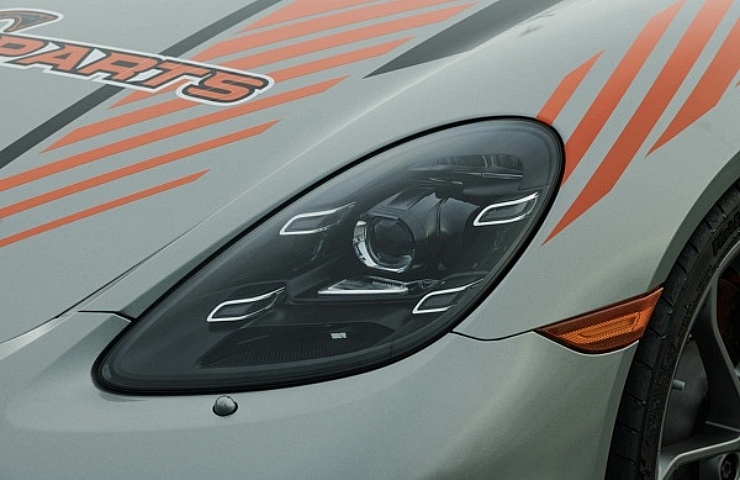Contents
Over time, your car’s headlights may show signs of fogging, condensation, discoloration, and other effects that reduce brightness. These are signs that your headlights need to be resealed.
Resealing headlights is a relatively straightforward process. You can complete these tasks at home with just a few materials.
Shop now for headlight sealantSilicone Headlight Sealant
Numerous brands of clear silicone sealants are made specifically for automotive headlamp assemblies.
- Silicone headlight sealant comes in a tube and is usually less than $10.
- Once applied and cured, silicone is heat- and water-resistant, providing a tight seal to keep moisture out for a long time.
- It’s flexible so that it won’t crack or peel due to harsh weather.
- Silicone can be messy, so applying sealant with no gaps is essential.
- The silicone sealant takes about 24 hours to set and dry thoroughly.
Polyurethane Headlight Sealant

- High adhesion to smooth surfaces. The sealant adheres well to smooth surfaces such as glass. It’s unaffected by vibrations, temperature fluctuations, and other adverse factors.
- The composition is impervious to moisture, so it prevents fogging.
- If carefully applied, polyurethane sealant can retain its properties for decades.
- Repairs can be carried out in various weather conditions, so it’s relatively easy to glue the headlight in the open (rather than in a garage or workshop).
- Oil, fuel, alcohol-containing liquids, and other road reagents do not affect polyurethane.
- Polyurethane is soft and sticky, so handle it with care. Drips can be challenging to remove.
Unlike the other options in our guide to resealing headlights, polyurethane headlight sealer is primarily intended for commercial use. You’ll have a tough time finding single-use DIY packaging.
Shop now for polyurethane headlight sealantButyl Tape
Butyl headlamp sealant is a plastic sealant made of elastomer-based polyisobutene that creates a strong bond and doesn’t degrade over time. That makes it ideal for long-term projects. Conversely, silicone headlight sealer is better suited for smooth surfaces and provides an excellent seal against water. Therefore, the best product depends on the type of headlight.
Shop now for butyl headlight sealantButyl tape is not actual tape or a sealant in a tube. It’s a rubbery bead that is easily applied by packing it into an existing groove in the headlight housing. It is made of the same material used to mount and seal replacement windshields. Of all the products in our guide to sealing headlights, Butyl headlight sealer is the most frequently used in DIY applications.
Buying a Headlight Sealer That’s Heat-Resistant
If you live in a place with hot weather, a heat-resistant headlight sealer is worth your consideration. Headlamps can get very hot. A heat-resistant headlight sealant won’t melt or crack under high temperatures. It can withstand temperatures up to 400 degrees or higher.
How to Reseal a Vehicle Headlight
Headlights that were glued shut can be tricky to open. However, you don’t need sophisticated tools or an oven to break the seal. Instead, apply low heat with a hair dryer. It should pop open without sustaining damage.
- After opening your headlights, remove the old sealant from the lens and housing. While this process can be time-consuming, thoroughly cleaning the old sealant from the channel ensures a new weather-tight seal. It may be necessary to sand the channel with sandpaper to improve adhesion.
- Apply the sealant around the light’s perimeter, leaving no gaps. Once it’s in place, press the two halves of the headlight together and hold for a few seconds until the sealant sets. Wipe away any excess sealant with a damp cloth. That’s all. You’re done!
If you’re using butyl tape, follow these instructions:
- Clean the surface of the headlight with rubbing alcohol to remove any dirt or debris.
- Apply a generous amount of butyl sealant around the perimeter of the headlight.
- Use a hairdryer to heat the area where you applied the sealant. This will help the butyl sealant bond better to the surface.
- Allow the area to cool and cure for 24 hours before driving your car.
Replacing a Sealed-Beam Headlight
Although sealed beam headlights are older technology, they have some advantages over newer technology. Mostly, they are not installed on newer cars, but there are a few out there. Still, they do have benefits over the new headlight technology, so we’ve included them in our guide to sealing headlights.

However, the most significant disadvantage of sealed beam headlights is that there are fewer bulb options, and they don’t illuminate as far or as brightly as composite headlights.
Replacing a sealed beam headlight is simple because you replace a single piece. Here are the steps:
- Locate the screws holding the headlight bezel/shell in place. There could be some small ones in the front of the headlight, but there will also be a retainer with a couple of screws in the back.
- After you are sure that all screws or bolts that hold the light in place are removed, use one hand to slowly back the lighting fixture out.
- When the fixture is removed enough so you can see how it’s connected, use your other hand to separate the connection from the headlight fixture.
- Next, clean off any corrosion that was left behind on the connection. Then, the new sealed headlight beam should go in as quickly as the old one came out.






